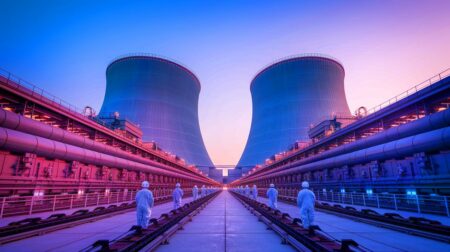Last year global CO2 emissions grew at the fastest rate since 2013 with new coal-fired plants contributing the largest share of the increase, according to the International Energy Agency. Coal demand, the IEA notes, grew by 1.7% in 2018 as a result of increased dependence on coal in India and China, which offset declines in CO2 emissions in Europe and the United States.
In other words, even as economically dominant countries such as Germany are moving away from coal-fired plants to reduce their carbon footprints, increasing energy demands in the developing world, especially India and China, are being met largely by new coal-fired plants. Last year global energy demand increased by 2.3% and is expected to continue growing, which means yet more coal could well be on the cards.
That spells trouble for global efforts to reduce CO2 emissions in any meaningful way.
“As a result of higher energy consumption, global energy-related CO2 emissions increased to 33.1 [gigatons of] CO2, up 1.7%,” the IEA notes in a new report. “Coal-fired power generation continues to be the single largest emitter, accounting for 30% of all energy-related carbon dioxide emissions.”
Making matters worse for worldwide plans to reduce CO2 emissions is that much of the coal-fired electricity generation comes from fairly new plants in Asia where their average age is only 12 years old, which is “decades younger than their average economic lifetime of around 40 years,” the IEA notes. That means these plants will likely continue spewing vast amounts of CO2 for decades to come.
Troublingly, 2018 saw a record set for emissions from coal-fired power plants with more than 10 billion tons of CO2 emitted worldwide. The growth in global emissions in 2018 alone, the IEA points out, was “equivalent to the total emissions from international aviation.”
And so, even as renewable energy is being adopted on an ever larger scale, globally fossil fuels, including coal, still dominate in the energy mixes of many industrialized nations with ever-increasing electricity needs.
“To me, all this reflects the fact that climate policies around the globe, despite some limited pockets of progress, remain woefully inadequate,” observes Michael Mehling, deputy director of the Center for Energy and Environmental Policy Research at the Massachusetts Institute of Technology in the United States.
“They’re not even robust enough to offset the increased emissions from economic expansion, especially in the developing world, let alone to spur decarbonization at levels commensurate with the temperature stabilization goals we’ve committed to under the Paris Agreement,” he adds.
Did you like it? 4.5/5 (23)








